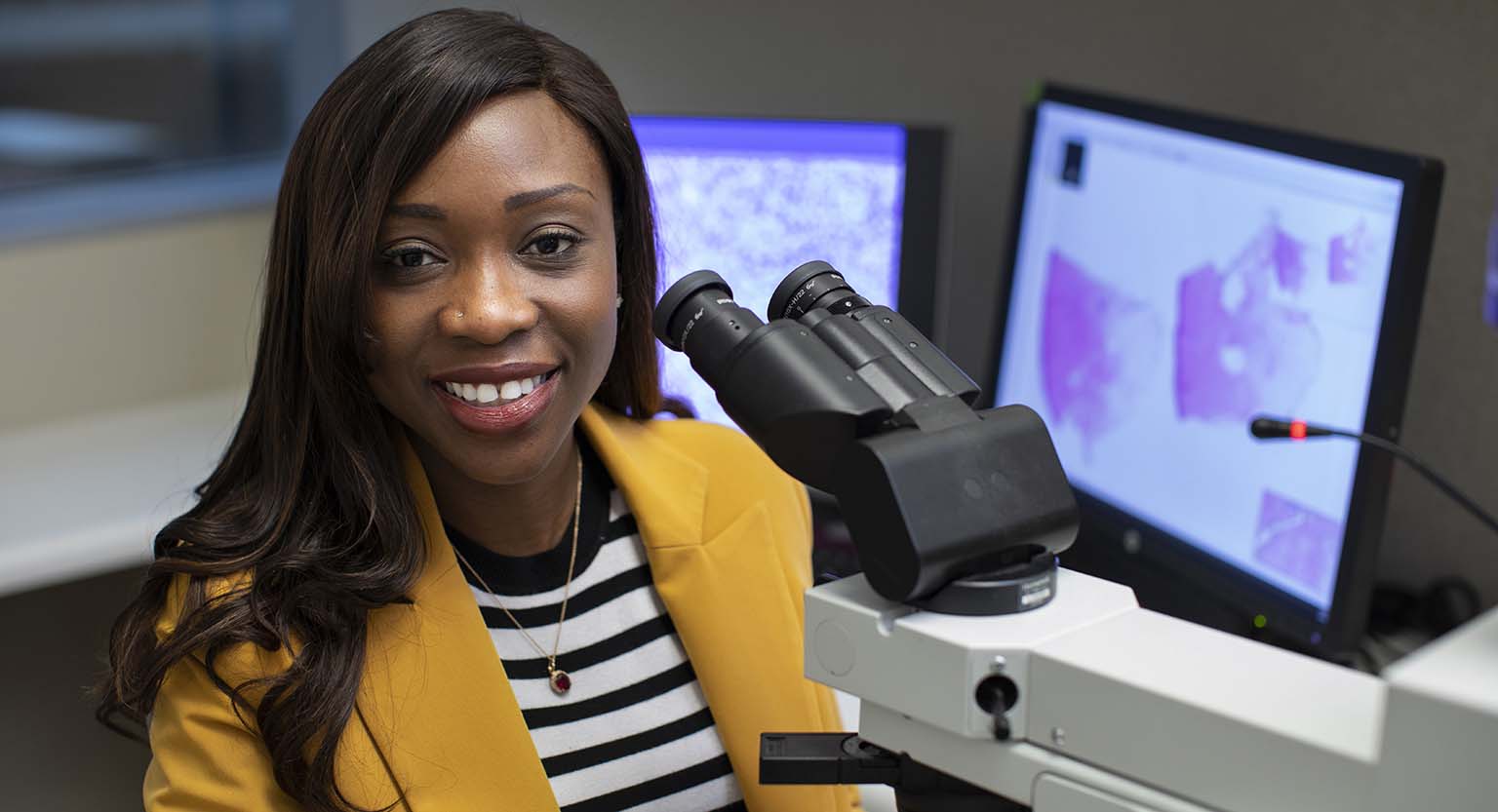Driving Patient Care Forward Via Commercial Partnerships: A Discussion with Mayo Clinic’s Yemi Sokumbi, M.D.
May 27, 2021 – By Jared Mueller, Director – Mayo Clinic Innovation Exchange
Mayo Clinic is a physician-led organization. This Mayo Clinic leadership model dates to the 19th century: operational administrators work in partnership dyads with leaders from Mayo’s consulting staff to strengthen and perpetuate Mayo Clinic’s ability to fulfill its mission. Teams and functions which may have few — or zero — physicians at other institutions often feature multiple physicians at Mayo. Mayo Clinic’s Department of Business Development is no exception. Its medical director, Clark Otley, M.D., is joined by two associate medical directors and an assistant medical director across all three of Mayo’s academic medical center campuses, including Yemi Sokumbi, M.D.
Dr. Yemi Sokumbi is an Associate Professor of Dermatology and Laboratory Medicine and Pathology at Mayo Clinic in Florida. Before rejoining Mayo Clinic — where she earned her medical degree in 2009, completed an internal medicine internship in 2010, and served as chief resident for dermatology in 2013 — Dr. Sokumbi served as director of dermatopathology at the Medical College of Wisconsin. Between her dermatology residency and her appointment in Wisconsin, Dr. Sokumbi completed a fellowship in dermatopathology at UT Southwestern Medical Center in Dallas. Dr. Sokumbi is originally from Lagos, Nigeria, and earned a summa cum laude degree in biomedical sciences from St. Cloud State University before beginning medical school.
Q: What is the role of medical leadership in the Department of Business Development?
YS: Major responsibilities include working to bring new healthcare technologies to patients, to advance Mayo’s 2030 strategic plan through corporate development activity, and to diversify Mayo Clinic’s revenue to support the institution’s mission.
One of the other important tasks I have is to demystify innovation. We want driving medical innovation to be, and to feel, fully accessible to all of our Mayo Clinic colleagues. With my Business Development colleague Charles Bruce, M.D., I am currently working on a project to “phenotype the Mayo Clinic inventor.” We are studying how the demographics of those who disclose innovations within Mayo Clinic diverge from the institution’s demographics overall — and evaluating how we can close the gaps where they exist.
Q: As a leader in Mayo’s Department of Business Development, why are you and your team focused on the incentives and barriers facing individual (and in many cases, tentative) innovators?
YS: Innovations within Mayo Clinic have already changed and improved many millions of lives. Oftentimes, those innovations involve a collaboration with one or more private sector partners. Edward Kendall and Philip Hench of Mayo Clinic shared a Nobel Prize in Physiology or Medicine for their work to isolate cortisone, a therapeutic agent the Mayo team worked closely with Merck & Co., to manufacture.
Mayo Clinic research also paved the way for the first FDA-approved total hip implant; for cutting-edge colorectal cancer screening kits; and for much of modern MRI technology. Mayo leadership remains very aware that Mayo’s faculty has not always reflected the gender, cultural, and racial diversity of the broader world. Researchers find that, globally, there has been far less investment in diagnostics and treatments tailored to the health needs of women and people of color — in large part due to the skewed demographics of healthcare investors and institutional leaders across the world.
Lives are jeopardized when under-represented innovators do not feel they have support to guide their innovations from the “bench to the bedside.” Conversely, Mayo Clinic and other research institutions have a commercial opportunity — and a chance to continue supporting our nonprofit missions — if we make up for lost time by advancing these often-untapped innovations.
Q: How do you engage with entrepreneurs and other key actors outside of Mayo Clinic?
YS: Constant outreach is essential. As one small example: on June 10, I will moderate a webinar on commercialization opportunities in the microbiome field, hosted by the Mayo Clinic Innovation Exchange in conjunction with experts inside and outside of Mayo Clinic. Mayo innovations in microbiome have already been licensed to innovative firms, such as Evelo Biosciences. Our Center for Individualized Medicine has a strong bench of microbiome experts. In this and other fields, we are constantly on the lookout for opportunities for Mayo to combine its clinical and scientific knowledge with the strengths of others to move patient care forward.
Q: What breakthrough innovations in healthcare delivery or technology excite you most?
YS: I’m excited about our opportunity to transform healthcare by harnessing the revolutionary power of digital health. The ability to transform how patients receive care, the opportunity to cure more people, reach more lives and meet people where they are is an innovator’s dream! Creating innovative solutions that allow health data to be analyzed quickly and accurately, leading to better detection, treatment, and prevention, is the bold future of healthcare that when done right, provides individualized care that always puts the needs of the patient first.
Call for Healthcare Innovations
Are you developing an innovative healthcare technology? Contact the Mayo Clinic Innovation Exchange to learn how membership can help bring your company or your idea closer to patients.

